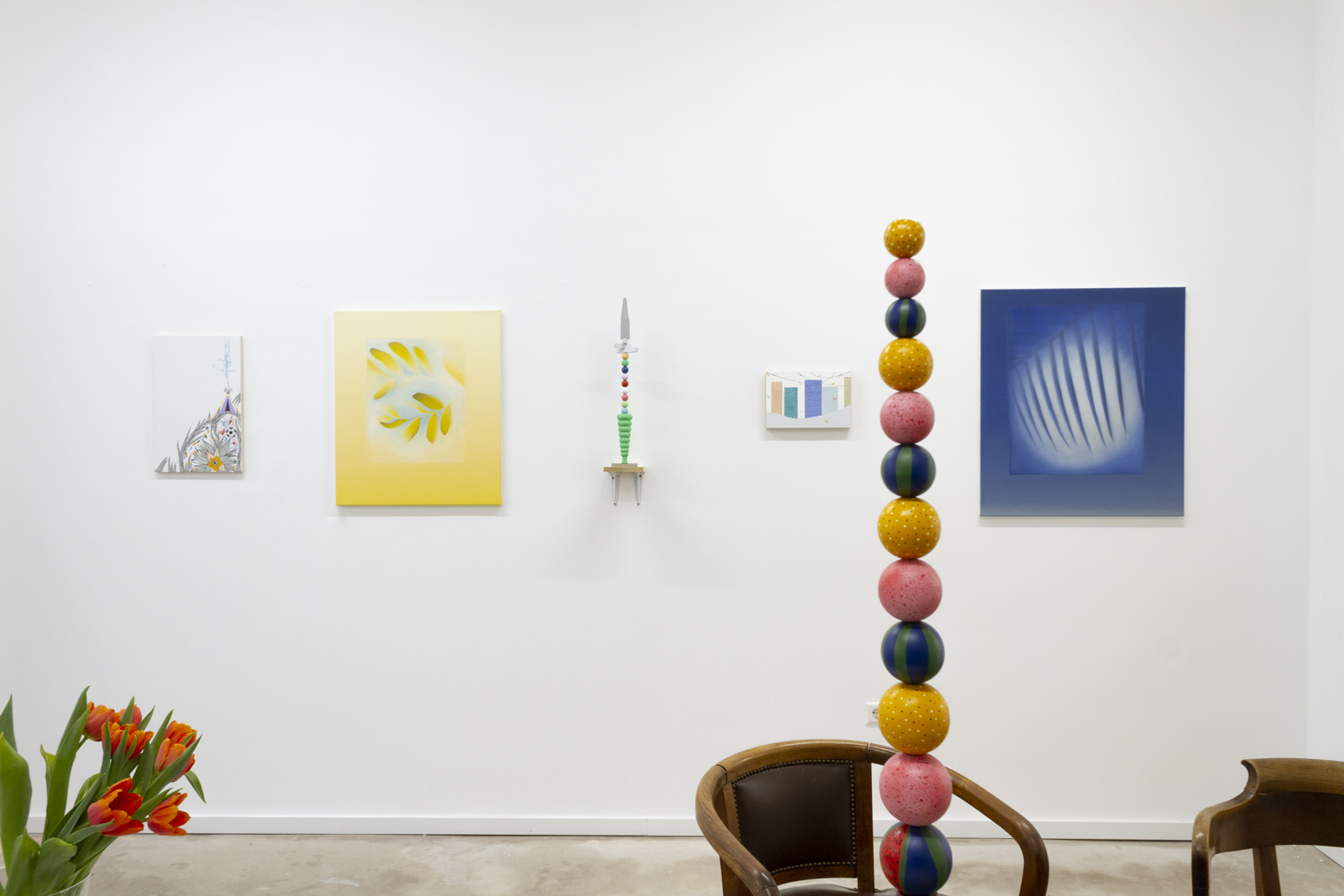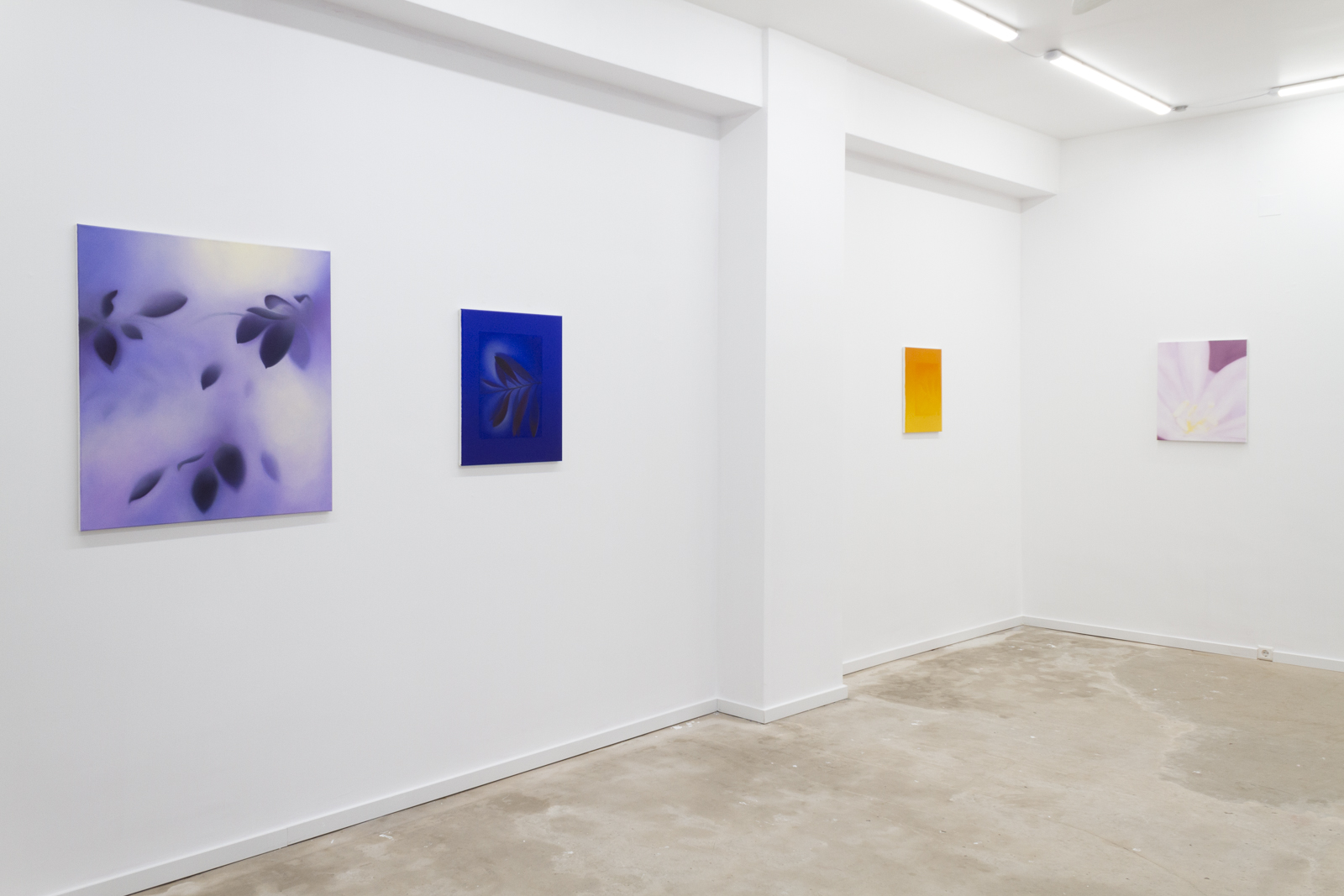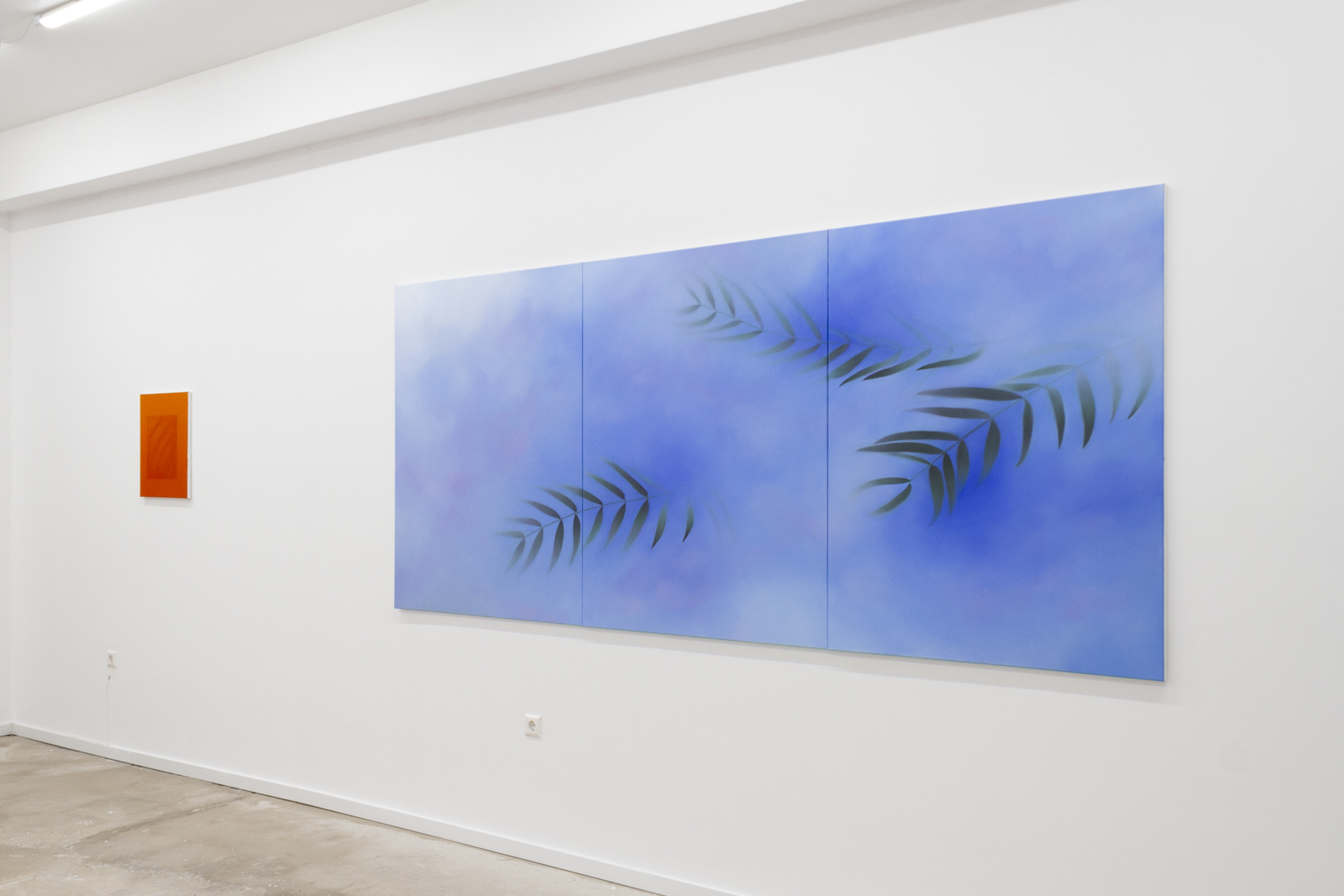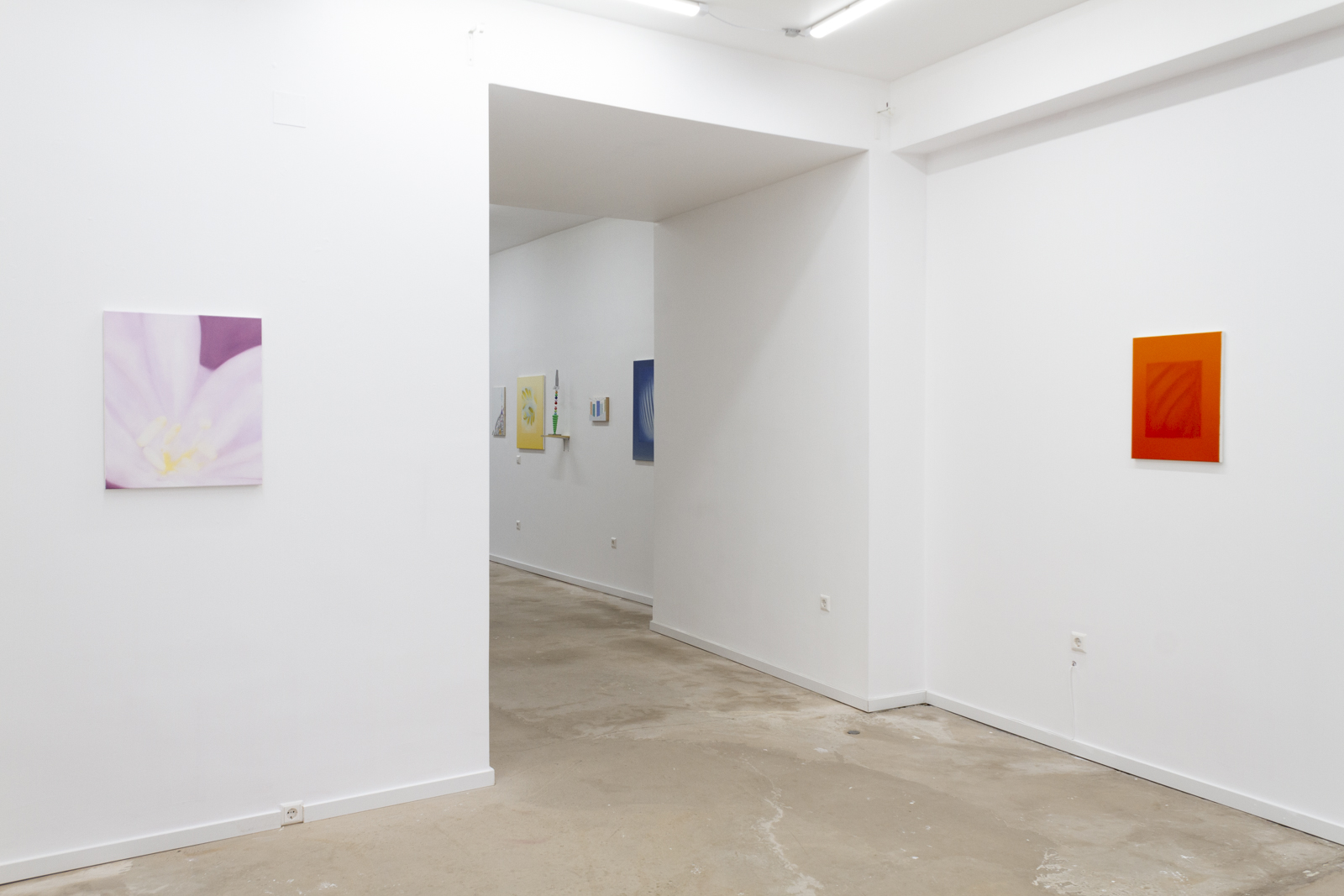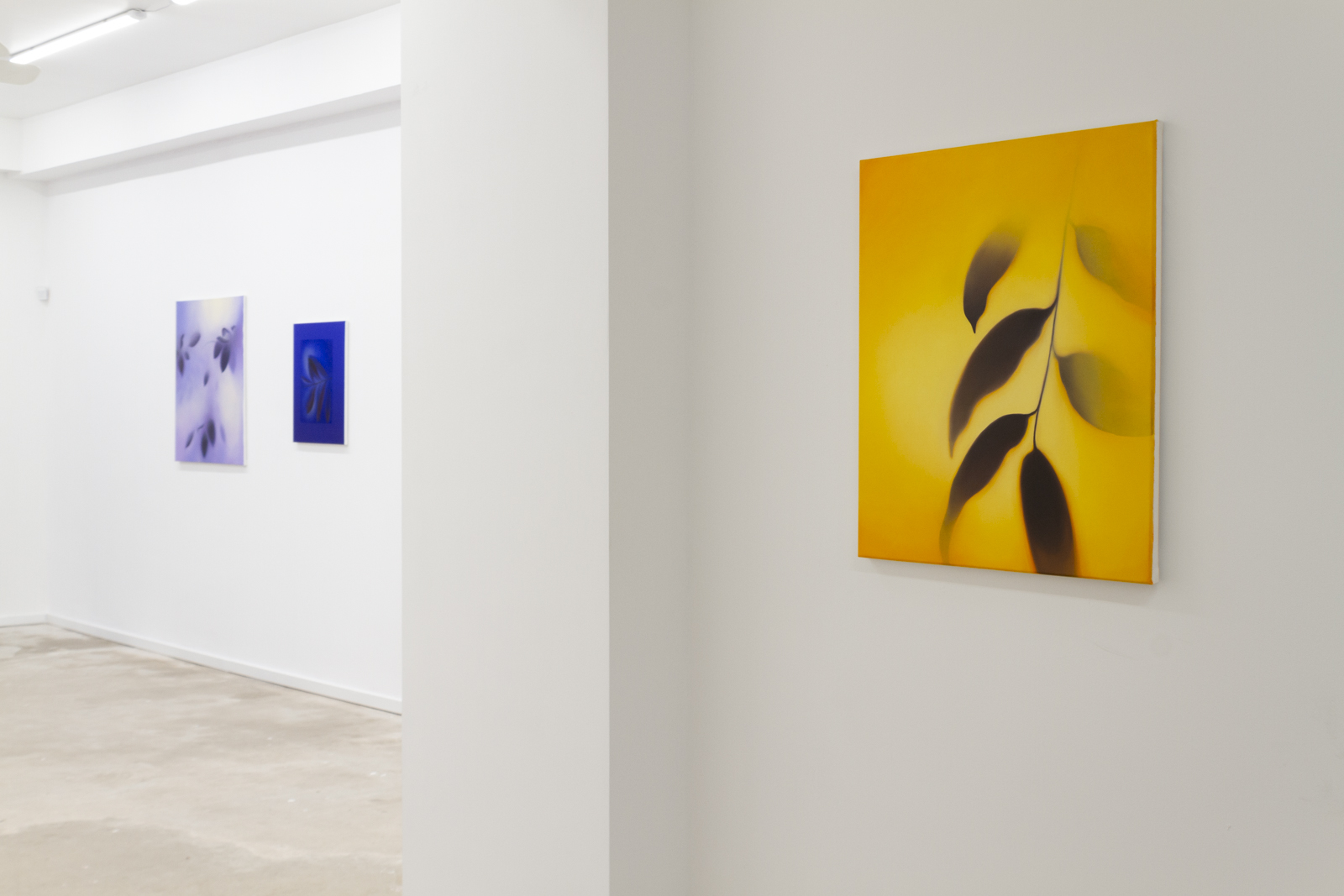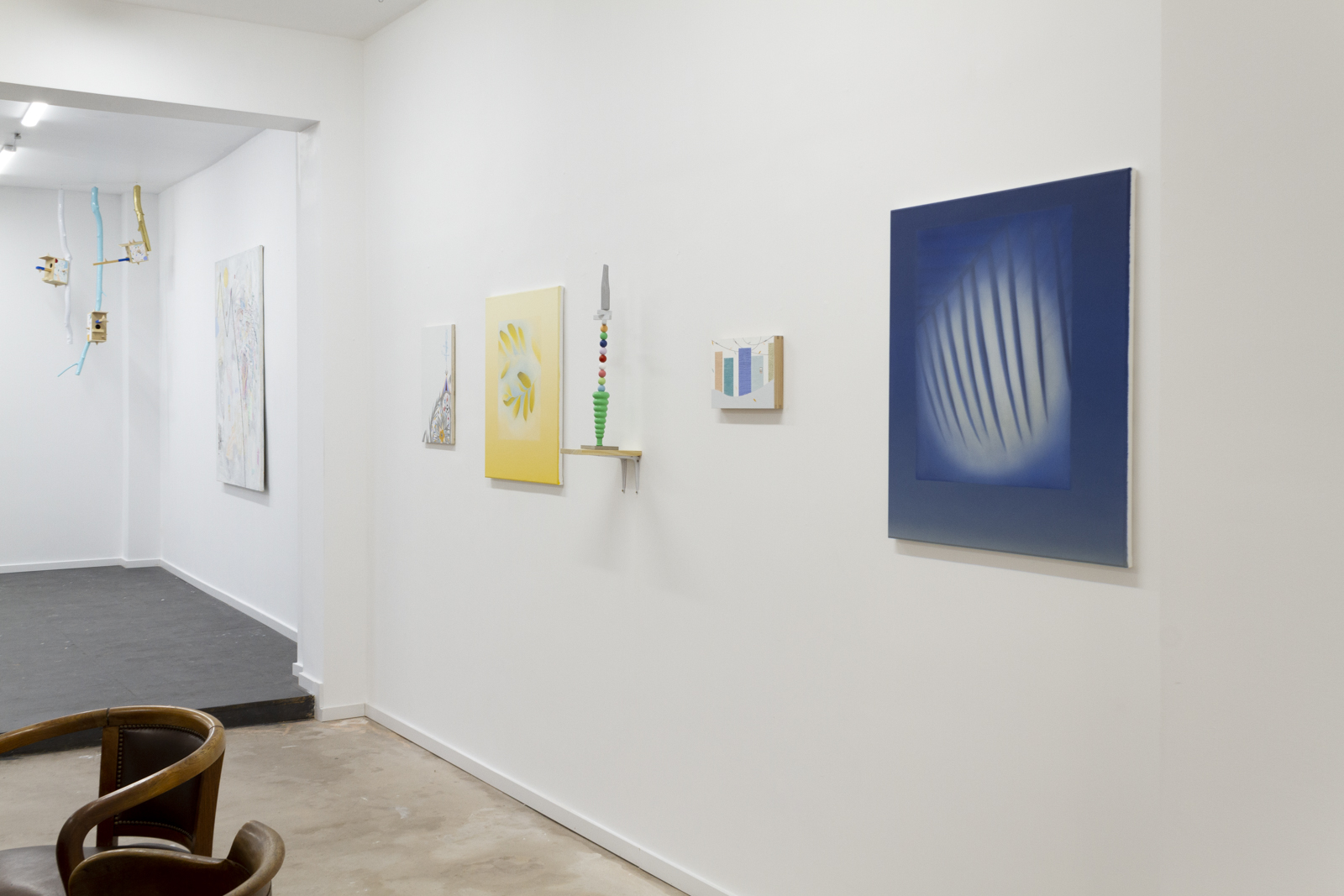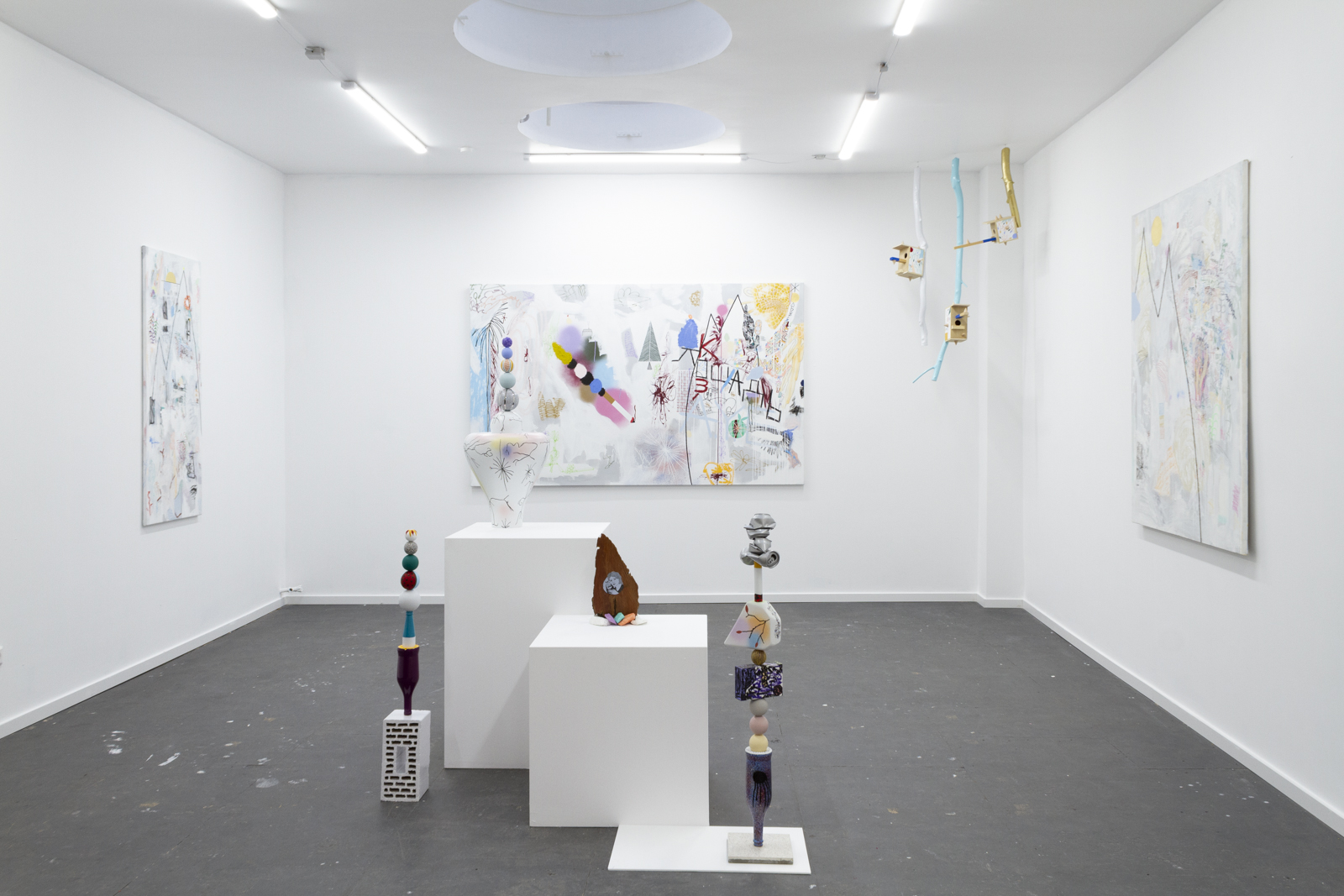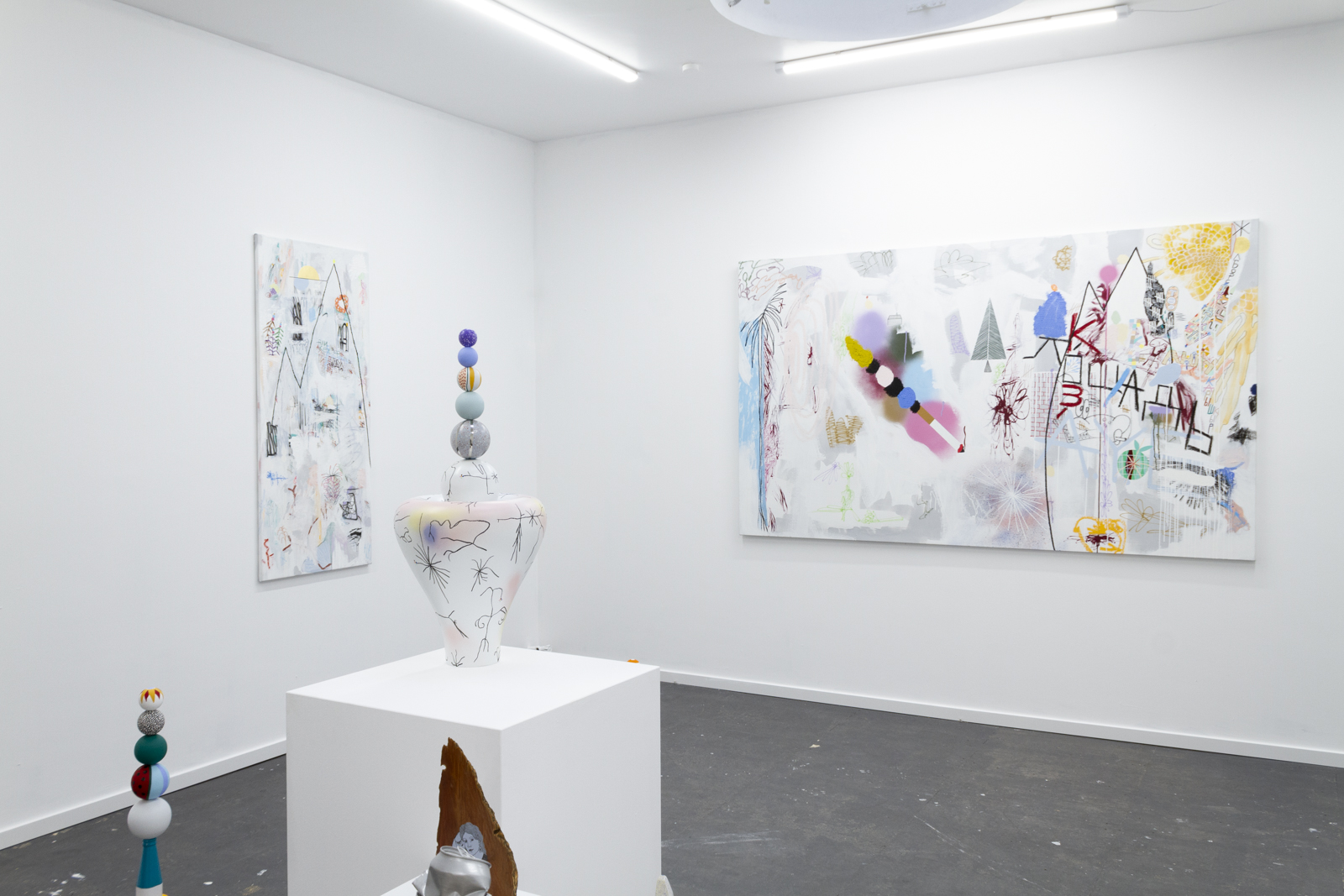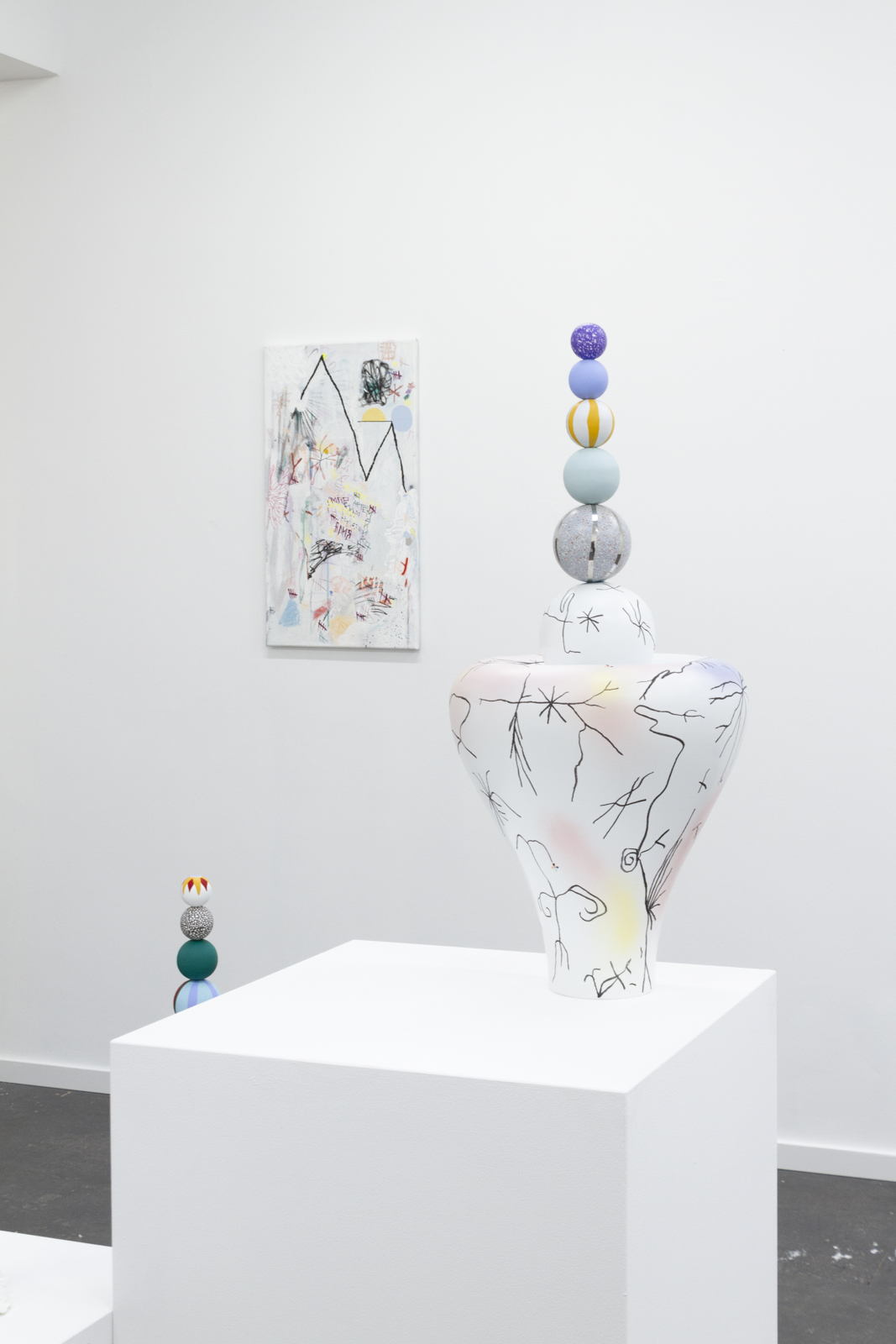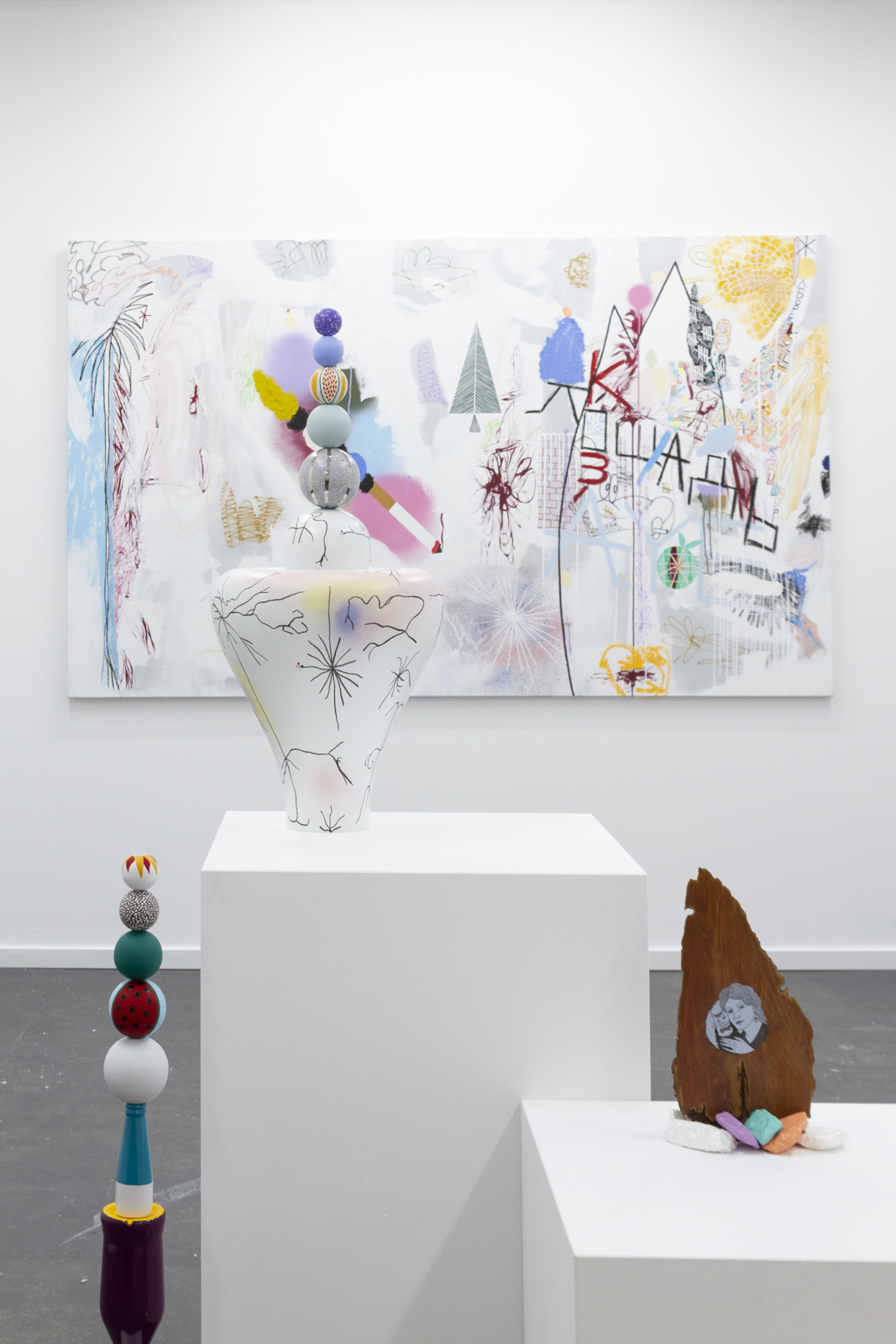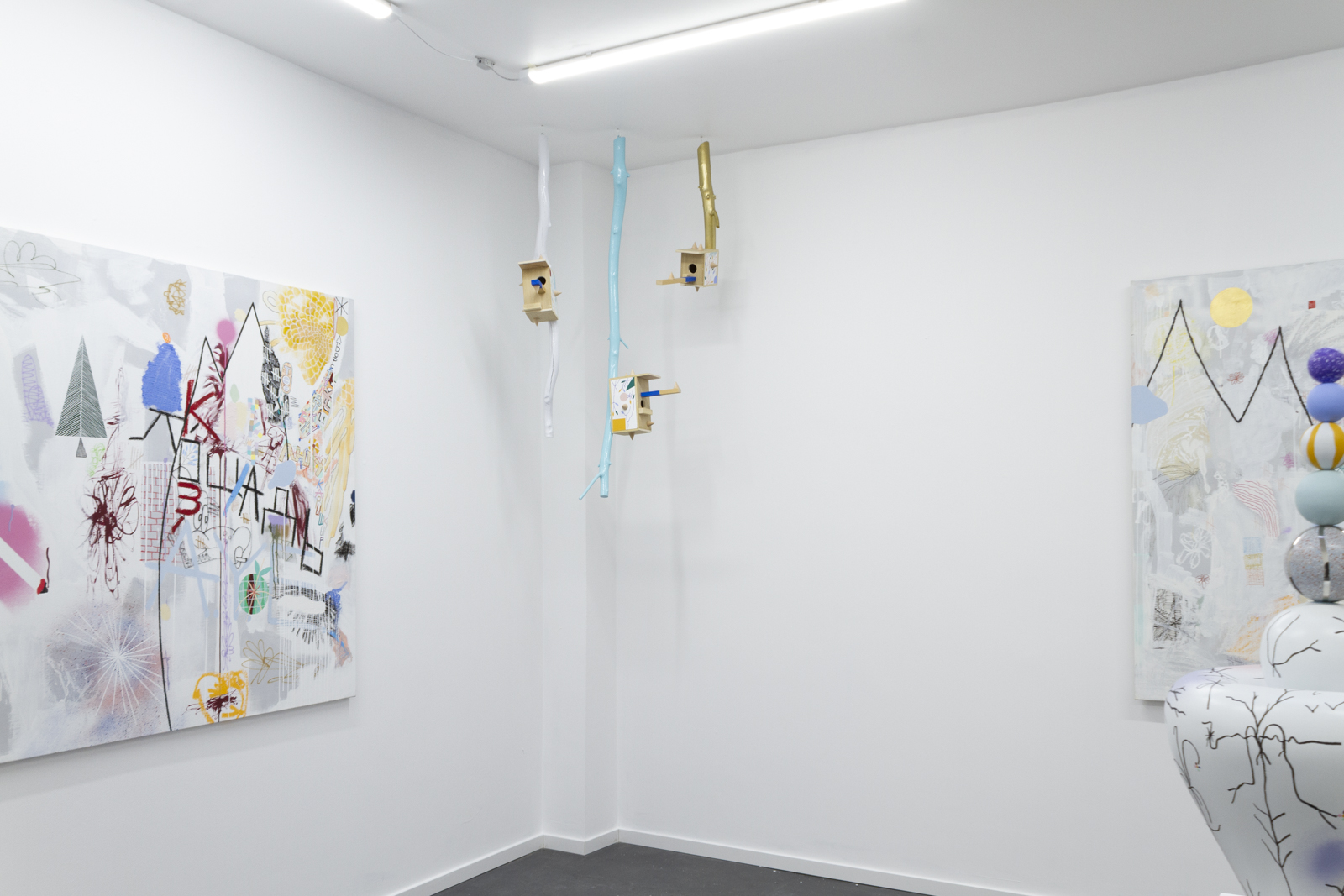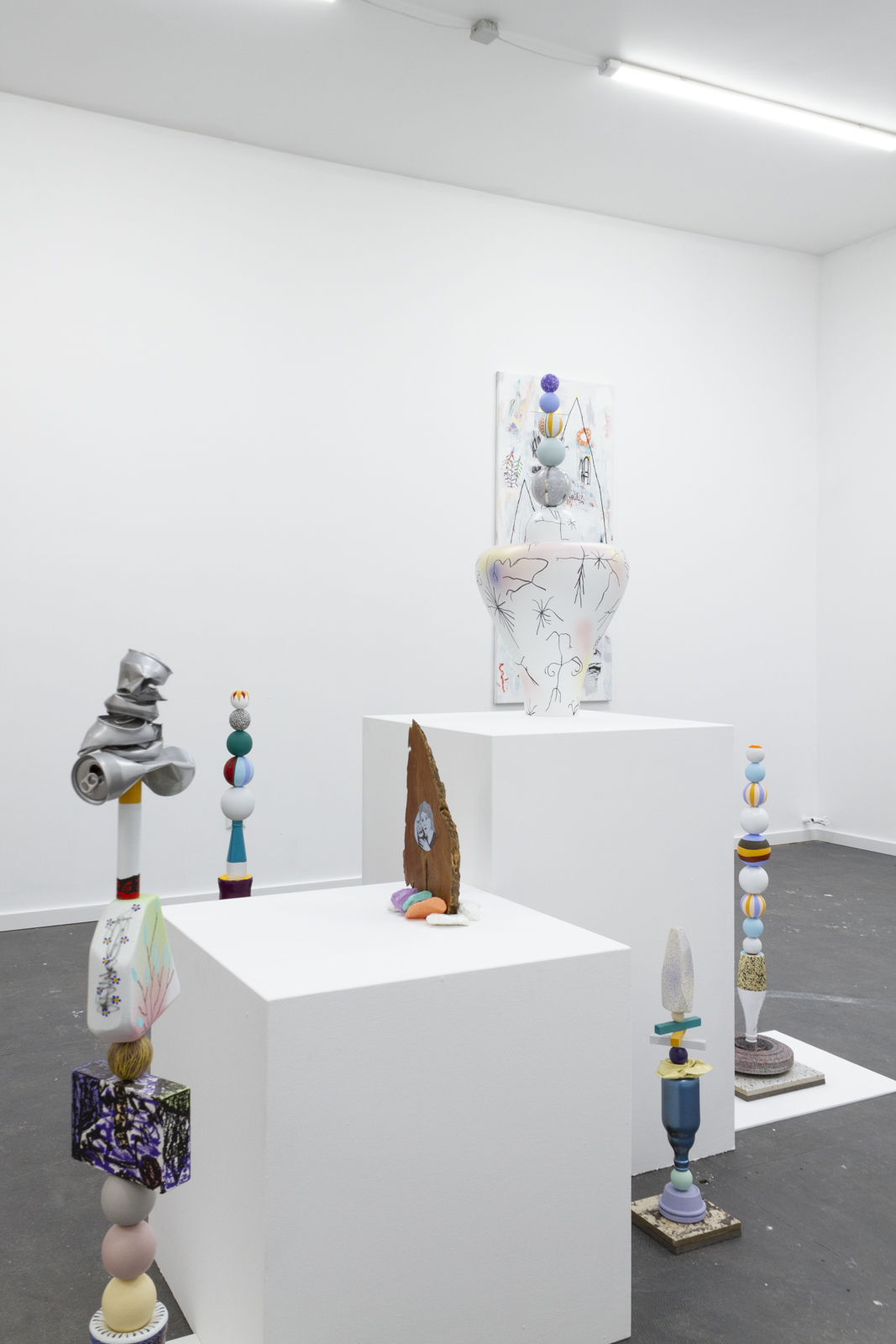- Clément Davout, Marcin Sobolev
- Mar. 29 - Apr. 27, 2024
- La promessse d'une belle journée
Born in 1993 in Flers, France, Clément Davout lives and works in Paris, France.
Clément Davout paints shadows of plants. In a short text presenting his work, he writes that he practices a painting "with a figurative tendency". The expression is remarkable, it places the work in an in- between, a grey zone. The shadow is not the motif itself but its projection. The shadows painted by Clément Davout are diffuse, evanescent, mobile, and are therefore not so much drawing as "matter that aspires to form", as Hubert Damisch puts it in relation to the cloud.
The artist, who has removed black from his palette, associates these shadows with a background painted in the same shades of color, the variations of which restore a diaphanous luminosity. One might think that Clément Davout paints paint. Conversely, one could dwell on the subject of these works, the choice of this domesticated nature which refers to the immediate environment in its simplicity and banality. But the essential is perhaps more in the tension that this approach produces with the image. Working with photographs, these projected shadows become colored vibrations of the pictorial material, they are then inscribed as a fragment in a surface whose color corresponds, in painting, to a color chart obtained by placing the work on Instagram. In this back and forth, it is a question of bringing back into painting what could only be an image with the regime of diffusion that currently defines it.
Born in 1981 in Belgium, Marcin Sobolev lives and works in Brussels.
The work of belgian artist Marcin Sobolev cover a personal narrative, abstractly depicting excerpts and scenes of everyday life in the Black Sea cities and remote regions of Central Asia…
Between the influences of local music, folk art, shamanic culture, cultural and personal past, the artist develops his own visual language yhich, in his totemic sculptures and detailed paintings, effortlessly conveys the energy of the places visited. The interplay of image and typography, symbol and context, detail and abstraction celebrates the vibrant aesthetics of everyday life in urban Eastern Europe and rural Central Asia and brings to the canvas what is often hidden: an impulsive creativity that produces honest and pure art. Sobolev's work are a tribute to the talent of the people, to a milieu that successfully opposes socio-economic heteronomy with its own creative will. He appropriates language, symbolism and rules, alienates them and fills them with his own multi-layered meaning, which becomes tangible in the composition of the works.

